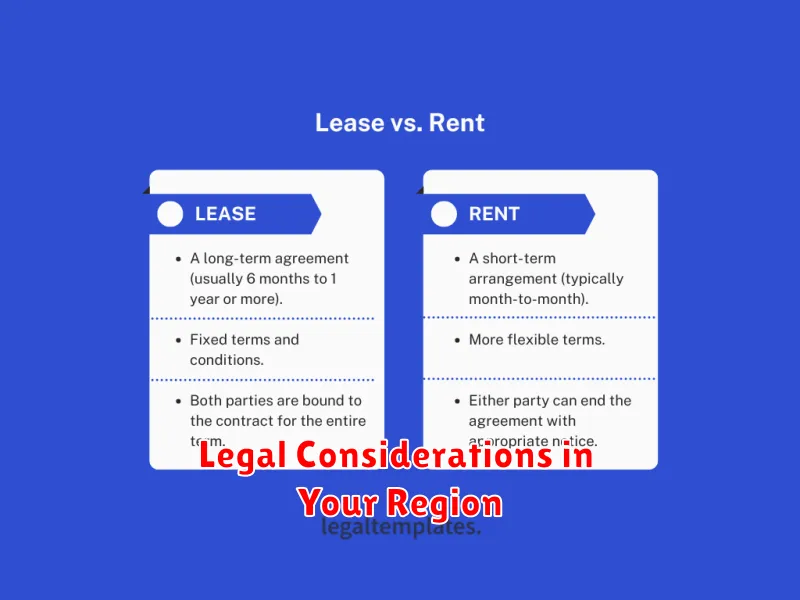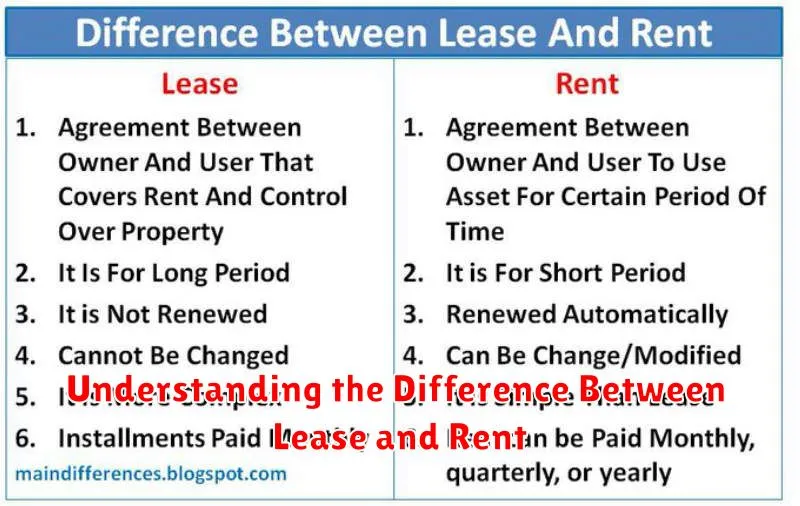Understanding the difference between lease and rent is crucial for anyone entering a property agreement, whether as a tenant or a landlord. Many people use these terms interchangeably, but they represent distinct legal arrangements with differing implications for both parties. This article will delve into the nuances of leasing versus renting, clarifying the key distinctions between these two common forms of property occupancy. We will explore the definitions of lease agreements and rental agreements, highlighting the duration, terms, and responsibilities associated with each. By understanding these differences, you can make informed decisions and ensure a smooth and legally sound property experience.
Navigating the complexities of property agreements can be challenging. This guide will provide a clear and concise explanation of the critical differences between a lease and a rent. We’ll examine the various factors that distinguish a lease agreement from a rental agreement, including the length of the term, renewal options, and obligations for maintenance and repairs. By the end of this article, you will have a solid understanding of the legal and practical implications of leasing and renting, empowering you to confidently choose the agreement that best suits your needs.
What Is a Lease Agreement?
A lease agreement is a legally binding contract between a landlord (lessor) and a tenant (lessee) that outlines the terms and conditions for the rental of a property. It grants the tenant the right to occupy the property for a specified period, typically for a fixed term such as six months or a year.
The lease agreement stipulates the rent amount, the payment schedule, and other crucial details related to the tenancy. This includes the length of the lease, the responsibilities of both parties (e.g., maintenance, repairs), and any restrictions on the use of the property.
Lease agreements provide stability and predictability for both landlords and tenants, as the terms are clearly defined and enforceable by law. They offer a framework for a more formal and long-term rental arrangement compared to month-to-month rental agreements.
What Does Renting Month-to-Month Mean?
Renting month-to-month refers to a tenancy agreement where the rental period is for one month at a time. This type of agreement automatically renews at the end of each month unless terminated by either the landlord or the tenant with proper notice.
Flexibility is a key characteristic of month-to-month rentals. This arrangement provides tenants with the freedom to move with relatively short notice, usually 30 days, although this can vary depending on local laws and the specific agreement. Landlords also benefit from this flexibility as they can adjust rent prices or make other changes to the terms of the tenancy with proper notice.
While a month-to-month agreement provides less stability than a fixed-term lease, it offers a valuable option for individuals in transition or those seeking short-term housing solutions.
Pros and Cons of Leases vs Rent

Leases offer greater stability and predictability. A fixed term provides security, knowing the rent won’t increase and you have a guaranteed place to live for the lease duration. This allows for better long-term planning. Leases also often come with more negotiating power for things like pet policies or included amenities.
However, leases come with less flexibility. Breaking a lease can incur penalties and fees. You’re also committed to the space for the entire lease term, even if your circumstances change.
Renting offers greater flexibility, allowing you to move with shorter notice and adapt to changing life circumstances more easily. It can also be more cost-effective in the short-term, especially in areas with fluctuating rental markets.
However, renting typically offers less stability. Your rent could increase with each renewal period and your landlord might not renew your agreement, forcing you to relocate. You also have less negotiating power compared to a lease agreement.
When to Choose a Lease Over Rent
Leasing can be a preferable option over renting in specific circumstances. Generally, leasing makes more sense when you desire more stability and predictability regarding your housing costs.
Consider a lease if you plan to stay in a property for a longer period, typically a year or more. This provides price protection against potential rent increases. A lease also offers more legal protection, outlining the terms and conditions of your tenancy and providing a greater degree of security.
If you have specific requirements or modifications for the property, a lease agreement provides an opportunity to negotiate these terms with the landlord. Finally, leasing often builds a stronger landlord-tenant relationship, which can be beneficial in the long run.
Legal Considerations in Your Region

Lease and rental agreements are subject to specific laws and regulations that vary by region. It’s crucial to understand the legal framework governing these agreements in your area to protect your rights and responsibilities.
Key areas of legal consideration often include:
- Security deposits: Regulations may dictate allowable amounts, permissible deductions, and required return timelines.
- Lease termination: Specific procedures and notice periods are typically mandated for both landlords and tenants wishing to end a lease agreement.
- Eviction procedures: Legal processes for eviction vary, and landlords must adhere to specific guidelines.
- Rent control: Some areas have rent control ordinances that limit the amount landlords can increase rent.
- Property maintenance: Laws often outline responsibilities for property upkeep and repairs, specifying obligations for both landlords and tenants.
Consulting with a legal professional or researching your local housing authority’s resources is highly recommended to ensure you are fully informed about the applicable laws in your jurisdiction.

